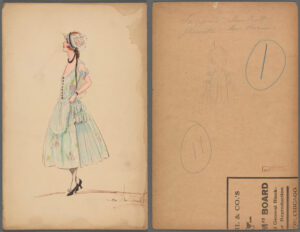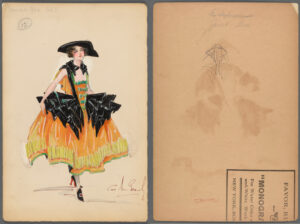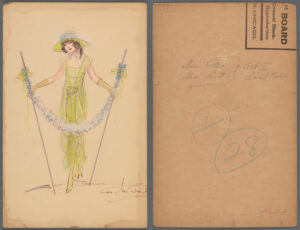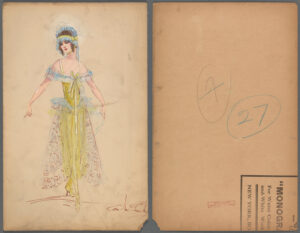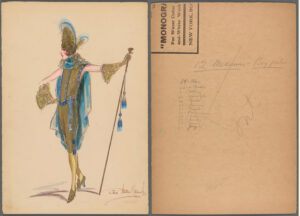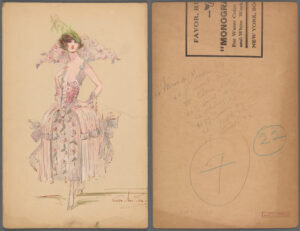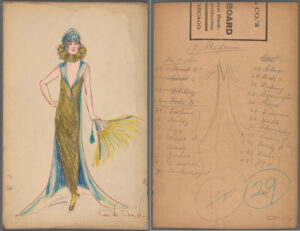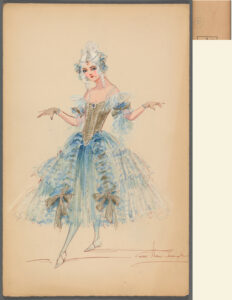Circumstantial Evidence for 1915/16
The Circumstantial Evidence
Francis Picabia most likely signed and dated Jeanne Marie Bourgeois in the summer of 1917, shortly after returning
to New York from Barcelona that spring.If Morée is by Duchamp and painted in New York, it must have been finished before October 1916. The added dots in its signature (“..Morée…”) appear to mark its position between Nude No. 2 and Nude No. 3 — a chronological marker in line
with Duchamp’s pattern of coded authorship.One further possibility is that it was created as early as mid-to-late 1915, during his stay in the Arensbergs’ apartment.
A fragmentary remark from Alexina (“Teeny”) Duchamp, while not conclusive, implicates this earlier period.Either way, the timeline converges: Morée was likely already in New York by late 1916.
And in 1916, who could have conceived Morée?
The list is very short.
The Physical Evidence
Favor, Ruhl & Co. "MONOGRAM" Board
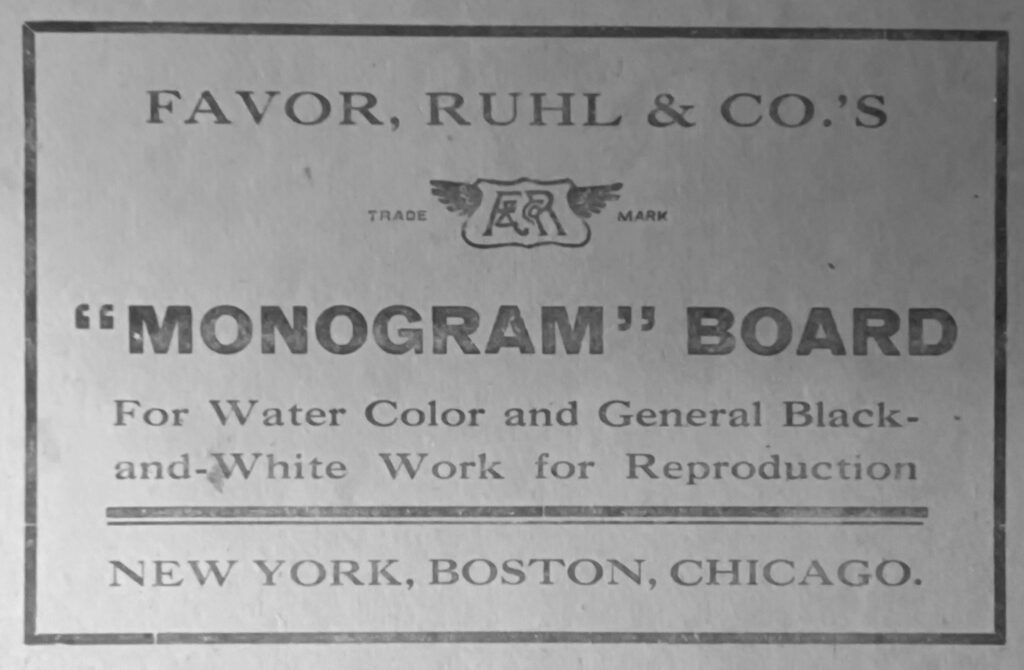
To the left is the stamp on the back of the Morée painting.
It is the older of the two styles. The differences are subtle,
but easily recognizable.
The older style has less space between the cities and is
justified with the rule above it. (same width as the rule)
The Stamp on the right is the newer style (1923 and later).
The difference presents itself in the list of cities.
The newer stamp (right) has extra spaces between the cities.
Also the newer style has the cities extending beyond the
rule above it. (wider than the rule)
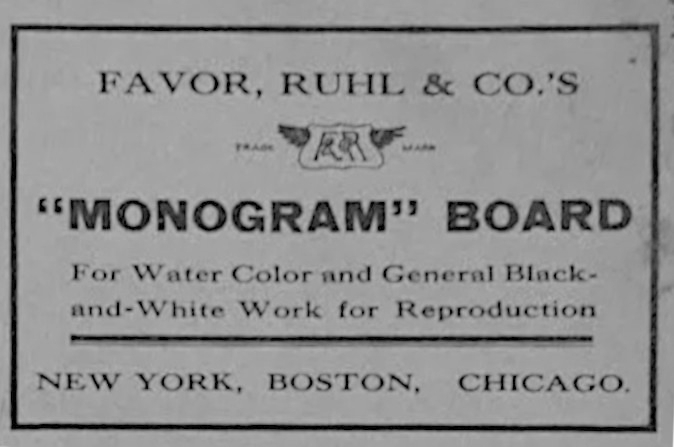
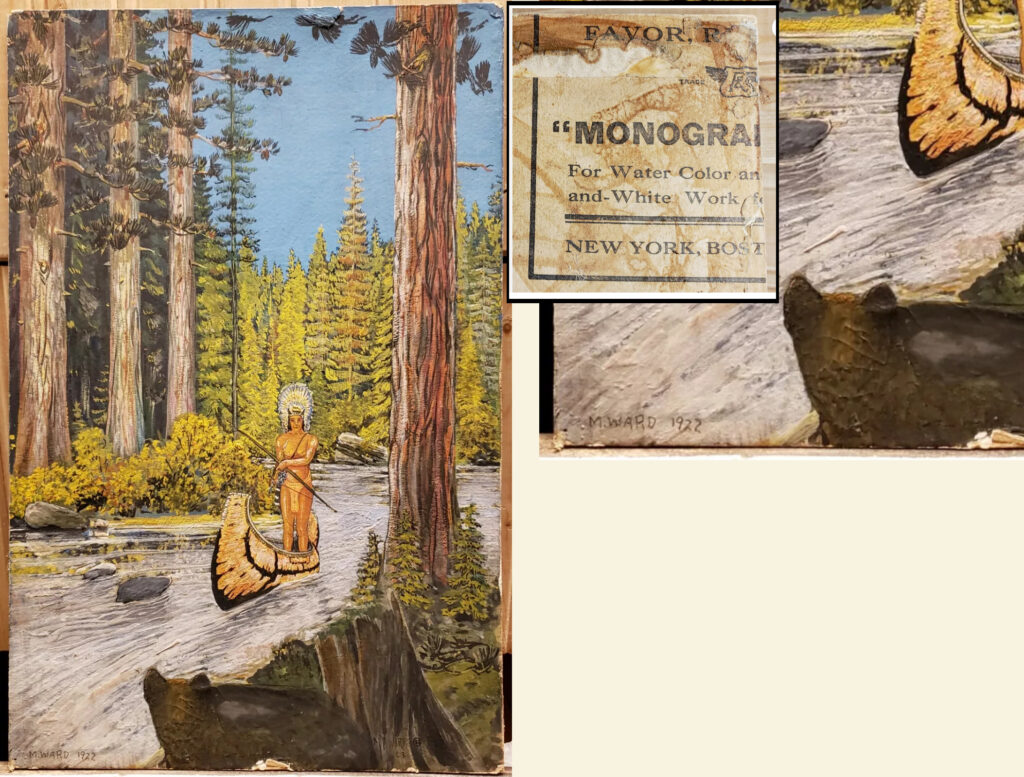
As of now, this 1922 painting represents the only dated artwork we that
have found that is executed on a Favor, Ruhl & Co. Monogram board. It bears the same stamp style as the one on Morée.Favor, Ruhl & Co. MONOGRAM illustration boards are documented
as commercially available by 1910. In the absence of evidence of discontinuation, boards bearing this branding cannot be excluded
from use in 1915. Our search for an earlier dated example with the
Morée style stamp continues.
This only says that the Morée style stamp was still in use in 1922.
How long before that we don’t know.
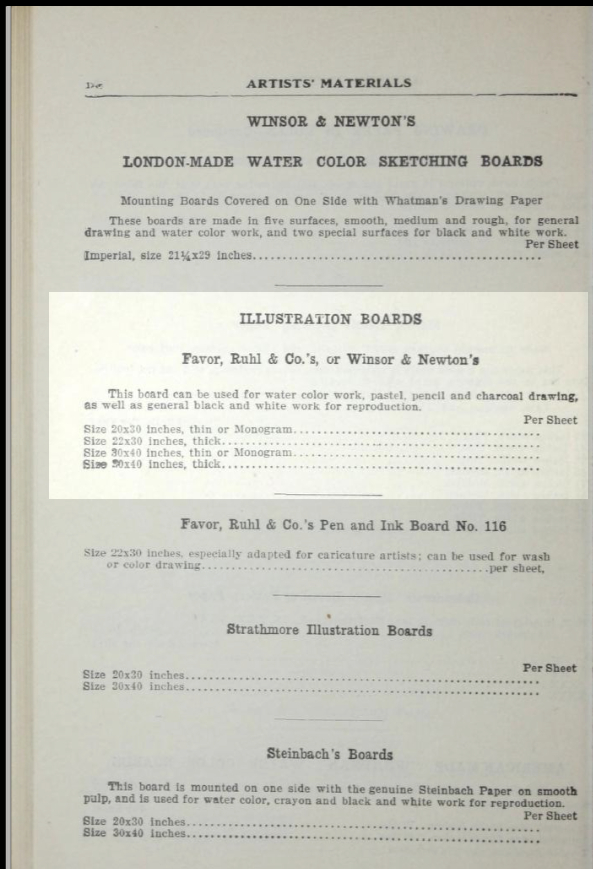
To the right is page 126 from a 1910 Favor, Ruhl & Co. catalog showing a listing for a 20×30 inch “MONOGRAM” style Illustration board.
Catalog Description:
“This board can be used for water color work, pastel, pencil and charcoal drawing, as well as general black and white work for reproduction.“
Phrasing:
Same product description used on the Morée label, indicating that “MONOGRAM boards of the correct size were available as early as 1910.
We do not know if they were marked with a Morée style stamp.
Below is a painting by H. Peabody Flagg dated 1912.
Not a MONOGRAM board but the corresponding label demonstrates that the “NEW YORK, BOSTON, CHICAGO”
locations were being displayed on other Favor, Ruhl board labels
at least as early as 1912.
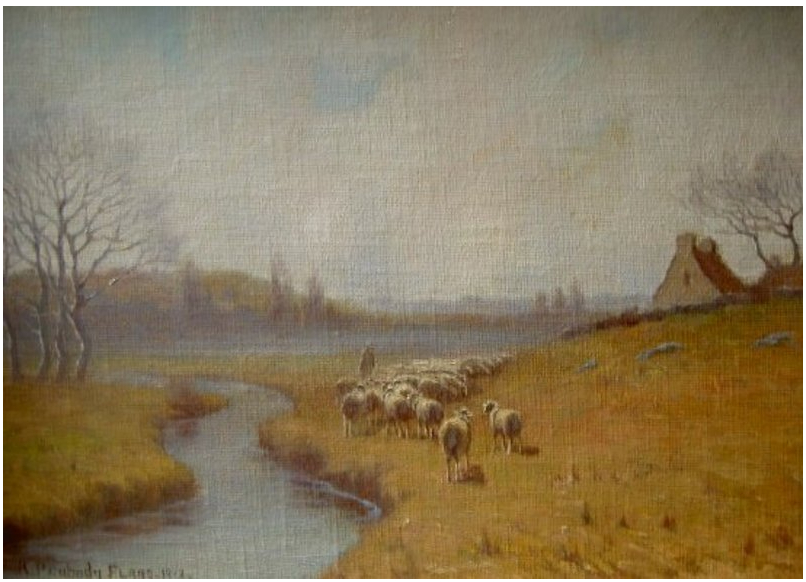
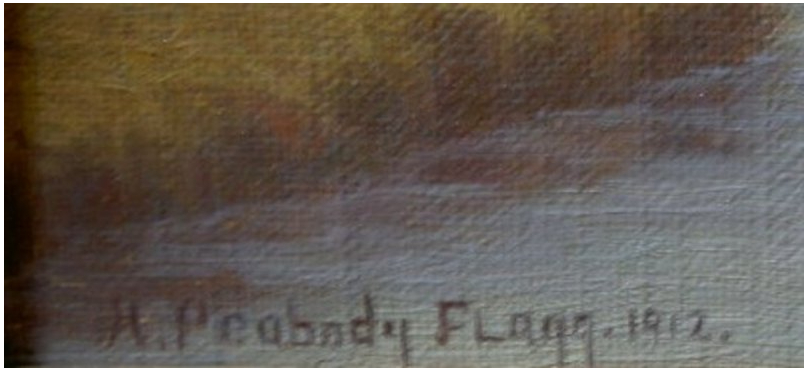
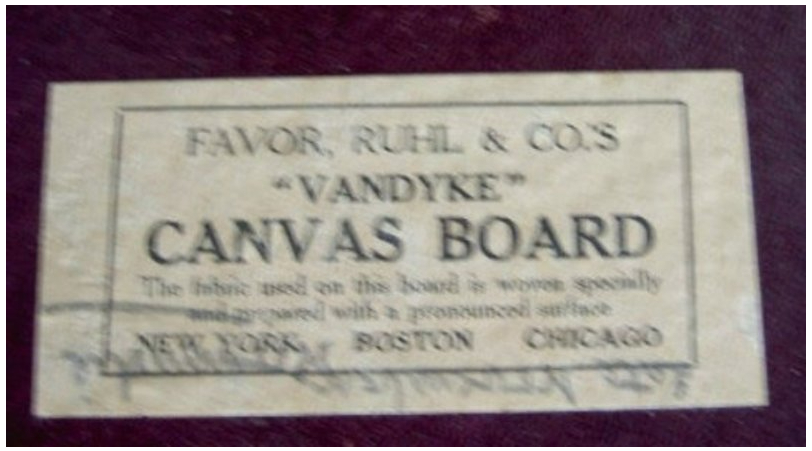
Drawings Suggest an Earlier Timeline for Favor, Ruhl & Co. Stamp Usage
Eight theatrical costume sketches, each executed on Favor, Ruhl & Co.’s “Monogram” illustration board, provide new comparative context for dating the board and stamp used for Morée.
Each drawing bears a board stamp identical in wording, typeface, and spacing to the stamp found on Morée. Importantly, these works form a coherent stylistic group, rather than a mixed or retrospective archive, indicating production within a relatively narrow timeframe.
Independent stylistic analysis situates these designs within the Ziegfeld Follies production language of the mid-1910s. Features such as natural waistlines, retained skirt structure, allegorical staging devices (including staffs and garlands), restrained palette, and pre–Jazz Age hair conventions are characteristic of theatrical costume design from approximately 1914–1916, with 1915 representing the most economical midpoint of that phase.
While the board stamp alone cannot establish an exact year in isolation, the convergence of material evidence (board and stamp) with independent stylistic evidence places the use of this exact Favor, Ruhl & Co. “Monogram” board earlier than previously documented examples. Rather than proposing a new fixed date, these drawings demonstrate that the stamp was already in professional use by the 1915 production season.
We continue to search for a securely dated example that anchors this stamp to a specific year. However, taken together, the evidence presented here supports 1915 as a terminus ante quem for the use of this exact board.
